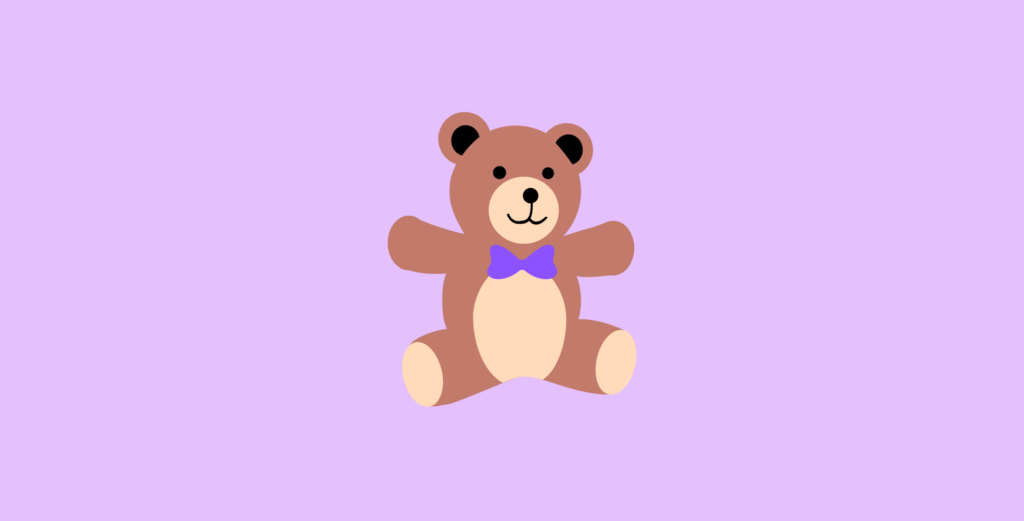
Looking for the perfect meditation companion for you and your little one? More than beloved toys, meditating with a teddy bear is great mindful practices. Teddy bears soothe young and old with their gentle, calming presence. Thinking about your favorite teddy, or famous bears like Winnie the Pooh, Paddington, or the Care Bears, probably brings a smile to your face.
But there’s more to teddy bears than just being cuddly toys who elicit feel-good nostalgia. In this post-pandemic era when stress and tension seem to be escalating around the world, people are turning to teddy bears to support them with anxiety, isolation, grief, and illness.
The mere act of holding a teddy or other soft, comfort object has been found to ease mental health challenges. Like petting a dog, cuddling a teddy bear or holding one while sleeping, lowers stress hormones and raises the feel-good hormone oxytocin which relaxes the mind and body.
There is a reason teddy bears are found in the back seats of police cars, in ambulances, and are given to children after natural disasters. The presence of a teddy bear reduces anxiety and restores a feeling of safety and security, wherever you are and regardless of the circumstances. Teddy bears are quite healing and are beginning to be seriously studied for their therapeutic benefits for people of all ages.
The science behind teddy bears and the comfort they provide is an emerging field, but one that is interesting and holds promise. A study published in the Psychological Science Journal found that people with low self-esteem could reduce existential fear by holding a teddy bear. Other studies have shown the comfort teddy bears bring to university students about to take an exam, and another, how teddy bears calm patients with dementia.
A 2014 study found that children who played with stuffed animals post-surgery had less pain than children who did not engage with stuffed animals after their surgeries. According to a study published in Sleep Health, teddy bears often help children at bedtime, providing them with comfort and support that makes falling asleep easier.
With so many proven benefits from one cuddly bear, it’s easy to see why meditating with teddy bears reduces anxiety and enhances well-being. Teddy bears can be part of any meditation practices and are especially suited for breath work, observation, and metta (loving-kindness) meditations.
Kids might enjoy using a teddy on their tummy to learn how to do breath work, controlling their breathing by watching the bear rise and fall with each inhale and exhale.
Some children struggle with breath meditations due to asthma, having a cold or allergies, or because focusing on their breathing makes them anxious. Many children, including children with vision loss, enjoy having an object to feel while they meditate. Using a teddy in an observation meditation is perfect for any and all children. Teddy’s are such sensory objects, furry, soft, heavy or light, with smooth or button eyes, fabric bow ties, and a variety of features that can be touched.
To make a teddy bear meditation even more soothing, put a few drops of an essential oil like vanilla, lavender, or peppermint on the teddy bear. Scent adds another sensory level to meditation and additionally supports feeling calm and safe. This is because scent is our most primal sense, and the one that most quickly lets us know if an environment is safe or not. In the same way that smelling fire or a strong chemical odor immediately alerts you to danger, a soothing fragrance like citrus or vanilla instantly evokes feelings of calm.
Teddy bears are also useful in metta, or loving-kindness meditations. They are especially helpful for children who have experienced grief or trauma, and for children who can’t easily express love toward others. Opening our heart for a teddy bear is much easier since they offer unconditional love, never leave us, and are always ready to cuddle.
To do a loving-kindness meditation with a teddy bear, get in a comfortable position, seated or lying down. Hold the teddy close, and if you are comfortable, look into its eyes. Send love to the teddy, using its name, if it has one.
A sample loving-kindness script might be:
May Teddy always be happy.
May Teddy always be safe.
May Teddy always be healthy.
May Teddy always feel love.
After doing this a few times, children may be ready to progress to including others and themselves in the meditation. Loving-kindness meditations are proven to increase positivity, reduce pain, quiet the inner-critic and foster love for self and others.
Of course you can use a teddy bear in any kind of meditation. Even if the teddy just sits by your side, their presence will help you feel calm and relaxed. Meditating with a teddy might be a way to encourage kids to meditate more often.
In Dragon’s World, Turtle always meditates with her teddy bear best friend! Wee Meditate has a content library perfect for meditating with your favorite teddy.
You can preview our meditation library and sign up to access our full content library.

